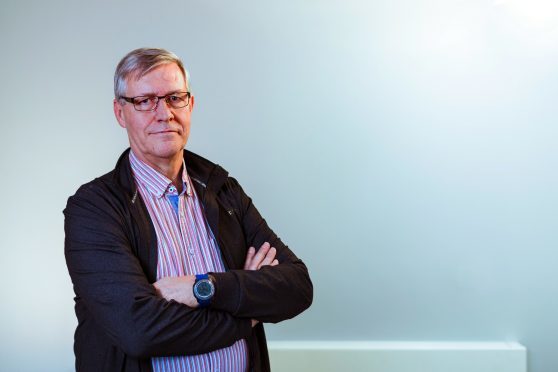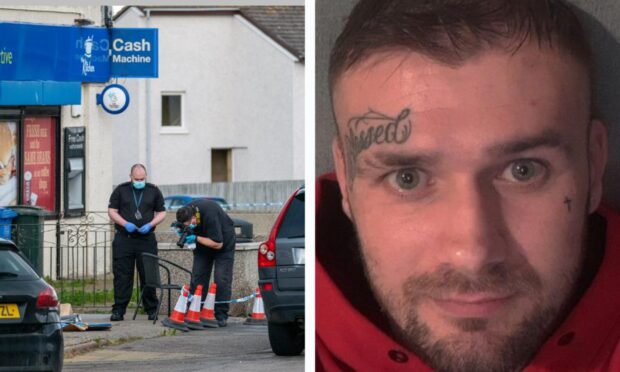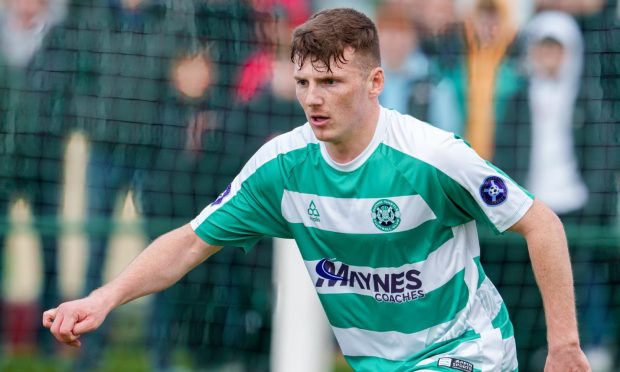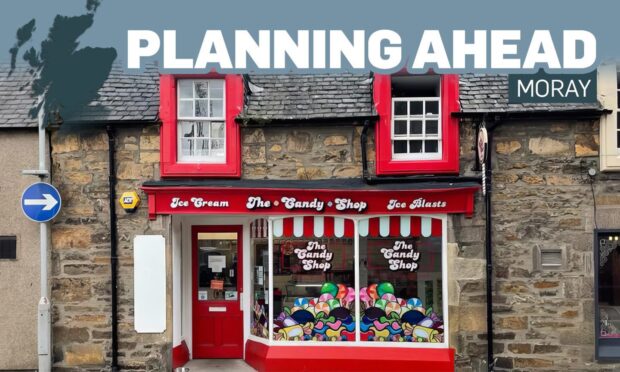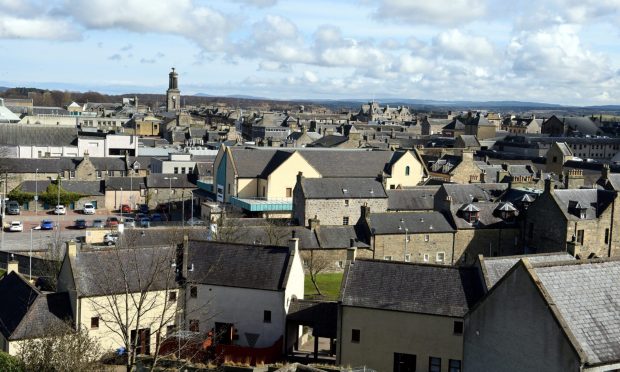Dr Ron Stewart knows all about the stresses and strains which are being placed on the NHS across Scotland.
He has devoted 33 years of his life to serving patients in the north-east and is an instantly-recognisable figure at Elgin Health Centre.
Known locally as Maryhill, it is one of the busiest practices in the country – where there are 17,000 patients on the book and 10,000 prescriptions issued every week to the 3,000 people seen by staff.
Yet, while the dedication of the 70 staff – ranging from GPs to receptionists, specialist nurses and a duty team – has been praised by the public, Dr Stewart is one of around 30% of Scottish GPs planning to retire in the next five years.
At 63, he has decided he will only spend two or three more years before going off “to join the wrinklies”.
And he has a stark message for those fighting to protect the NHS and preserve the existence of such resources as his workplace.
He said: “The elastic is getting stretched and stretched and stretched. And while we want to do all we can for patients, it is growing more and more difficult.
“In the old days, we would advertise a job in the British Medical Journal and get 30 or 40 people applying in the next week. Filling posts wasn’t really a problem.
“Now, though, we often don’t get any applicants at all and the recruitment situation is a huge issue.
“Nearly half of all GPs leave their job before they are 50, so finding new people to fill their shoes is crucial, especially when you have people of my age who are also planning to retire.
“Quite frankly, the issue of retaining doctors is critical and it is in danger of becoming unsustainable.”
Elgin Health Centre has opened its doors to provide unprecedented access to life behind the stethoscopes and swabs for a new BBC series, The Family Doctors, which starts tomorrow.
But while the programmes testify to the dedication of all the staff at the facility, there is no disguising the strength of feeling among these workers that the system is buckling at the seams.
Practice manager, Eileen Rae, said: “There are fears the six full-time doctors could fall to four or even three.
“If we have fewer GPs, appointment numbers fall, patients feel frustrated, and so do we.
“The worst-case scenario is us closing our doors in the future. Nobody wants that to happen, but if people retire or leave the practice to find other jobs.”
Last night, Dr Stewart admitted he has concerns about the state of general practice in 2018, compared with how it was when he started out in 1985.
He said: “The main issue is a sheer lack of numbers in terms of GPs and what is happening in Moray is happening all across Scotland.
“There are fewer GPs and more patients than there used to be and the only way to transform that is to recruit more young people and persuade them that becoming a GP is an attractive career path.
“It used to be quite simple and straightforward, but things have changed a lot. Nowadays, there aren’t many conditions we can’t do anything about, so the expectations of patients have changed: that can occasionally be a mixed blessing.
“I am much busier than I was 30 years ago. But many of my former colleagues have retired – I suppose I am slightly unusual in that I am planning to remain here until April 2020, when I will be 66.
“But I am seeing people in here now, who are the children of the parents of some of my former patients. You build a connection and you get to follow their journey. It’s a relationship which takes time, but it’s important.
“Of course, there are issues with the service just now. Ten minutes isn’t enough for an appointment, and the average consultation is nearer 12 or 13 minutes.
“But if you made every apppointment last even 15 minutes, you would miss seeing so many patients.
“It does feel as if you are skating on thin ice, but what can you do? We deal with everything from the trivial to the catastrophic, and there is lots of burn-out, but you have to do your best, and just get on with it.”
Maryhill has recently lost the full-time services of one of its GPs, Dr John Nicol, who has taken up a senior post as assistant director for postgraduate GP education for the NESCol in Aberdeen.
As a result, he has resigned from the partnership, but is continuing to work as a salaried GP assistant, providing four sessions a week.
It means he has to juggle his duties, but that applies to the majority of staff in the thin red line.
Dr Kerry Cattanach, from Garmouth, graduated from Aberdeen University in 2012, and is one of the youngest staff members at the practice.
But every day is a new challenge, and she sits with a kitchen timer on her desk, designed to ensure she can fulfil her daily dose of 30 appointments, without keeping people waiting.
As she revealed, it works better in theory than in general practice. The programme shows her reaction throughout her dealings with one elderly patient with lung cancer, whose condition had deteriorated, and for whom there was no cure.
At the end of their meeting, the appointment had lasted over 25 minutes, but Dr Cattanach spoke about the difficulties of working compassionately in such a punishing schedule.
She said: “Emotionally, it’s tough. If you are always purely professional in your approach and don’t have any empathy, you are in the wrong profession.
“But it’s frustrating. I have to apologise for running late to the next patient who comes in the door, but you have to get used to making these kind of judgement calls.”
The Scottish Government recognises there are challenges to be addressed in the recruitment of GPs, and particularly those who work outwith the central belt.
Some of the proposed action to improve matters includes a £7.5million investment in 2018-19 to recruit and retain GPs, and suppport for 160 rural and remote practices, including “golden hello” payments of £10,000 to GPs taking up their first post in a rural location, in addition to relocation packages of up to £5,000.
Health Secretary Shona Robison said: “We are aiming to increase the number of GPs by at least 800 over the next 10 years to ensure a sustainable service that meets increasing demand.
“The new GP contract, developed jointly by the Scottish Government and the British Medical Association will, if it is accepted, help cut doctors’ workload and make general practice an even more attractive career.
“We are investing £110million in 2018-19 to support implementation of the new GP contract and wider primary care reform. By the end of this parliament, we’ll provide extra investment of %500million per year for Primary Care funding.
“This will raise the primary care budget from 7.7% of the total NHS frontline budget in 2016-17 to 11% by 2021-22.”
Last year, the Royal College of GPs in Scotland predicted a shortfall of 856 GPs in Scotland by 2021 and a recent Audit Scotland report raised concerns over a lack of staff.
And while Dr Stewart welcomed the news of the steps being implemented by the Scottish Government, he worries that simply flinging money at the problem will not solve the underlying issues.
He added: “I am a 100% believer in the NHS and I very much want to see it flourish. But there has to be greater emphasis on being realistic about the challenges of being a GP.
“It can be a difficult life, but it can also be a very rewarding one. There is the teamwork and the camaraderie of working together to make people feel better and the knowledge that what you are doing matters.
“But it isn’t easy and there are times where it can be frustrating. The NHS is under pressure, and there is a doomsday scenario where we have too few GPs and too many patients.
“The big challenge is to encourage medical students to go into general practice and regard it as a long-term vocation. If we don’t succed in that goal, things won’t improve.”
Dr Stewart believes implicitly in the values of the NHS and is proud of the high quality of care which is being provided throughout Scotland in often testing circumstances.
Asked whether he foresaw the introduction of such developments as patients having to pay for appointments, he was clear in his opposition.
He said: “I wouldn’t want to see that at all. We need to work to maintain the free-at-access status of primary care. I am a strong supporter of that principle and it is something I hold dear.”
The three-part series, The Family Doctors, begins on BBC2 at 9pm tomorrow.
Why Elgin Health Centre was chosen
Elgin Health Centre was chosen for the new series because it embodies many of the problems which have confronted the NHS across Scotland.
Ross Harper, of Red Sky Productions which made the documentaries for BBC Scotland, said; “We wanted to find a practice that was broadly representative of much of the country.
“City centre practices have concentrations of particular demographics and often health issues too, but we were hoping instead to show a diverse range of people and health issues which in effect meant focusing on a sizeable town.
“We were also keen to be inside a practice that was involved in training new GPs. That way we would gain insight into the issues of recruitment and retention that are big challenges across the country.
“We identified Elgin Health Centre as having the range we were looking for and they agreed to give us access. Filming largely took place over the summer, but we also returned in the autumn to capture the start of the cold and flu season.
“The team at the centre were very open and frank about the challenges they face.
“Many patients don’t understand what goes on behind the scenes and we believe the series will be an eye-opener for quite a number of us, who may have grumbled about not being able to get a doctor’s appointment at short notice.”
